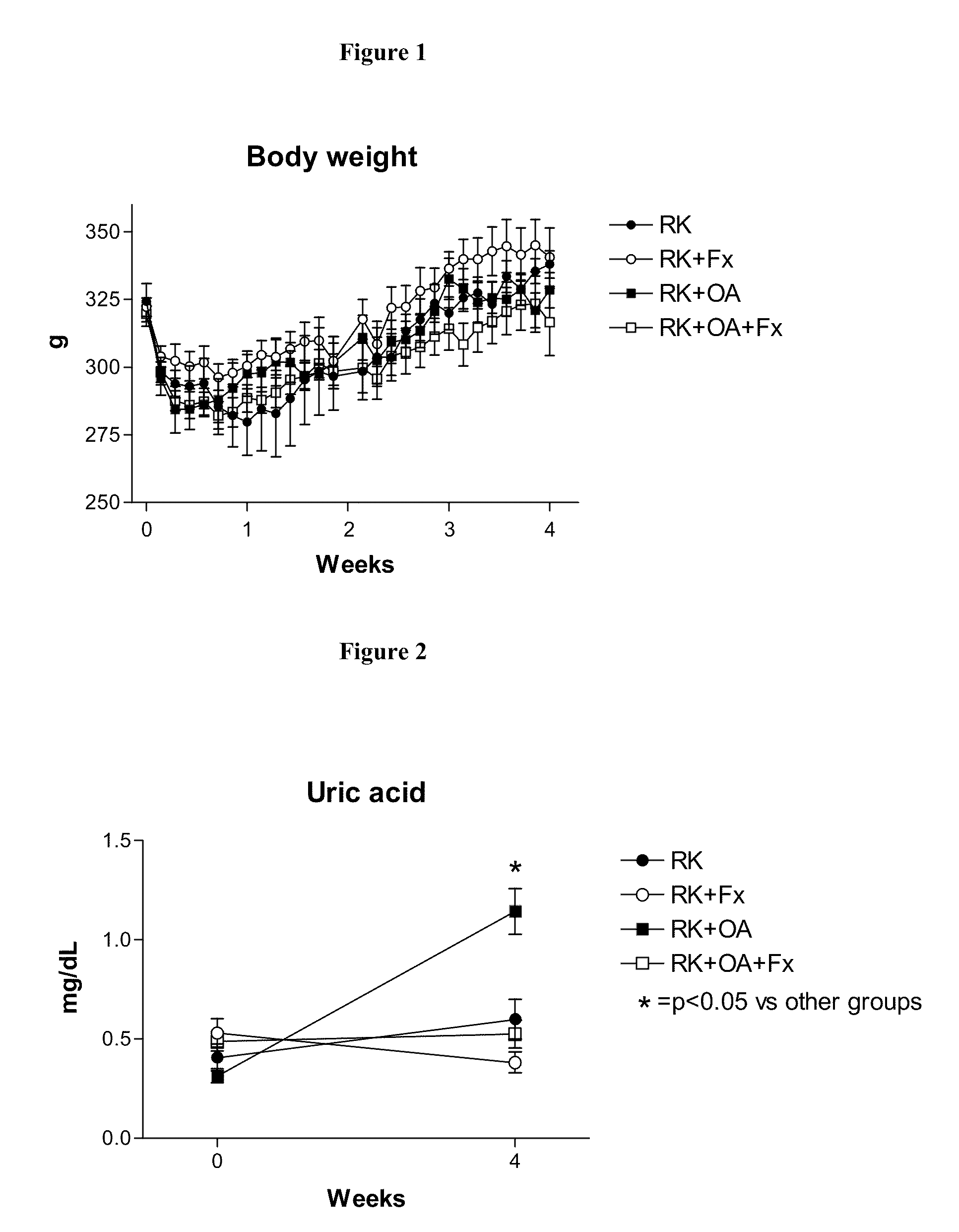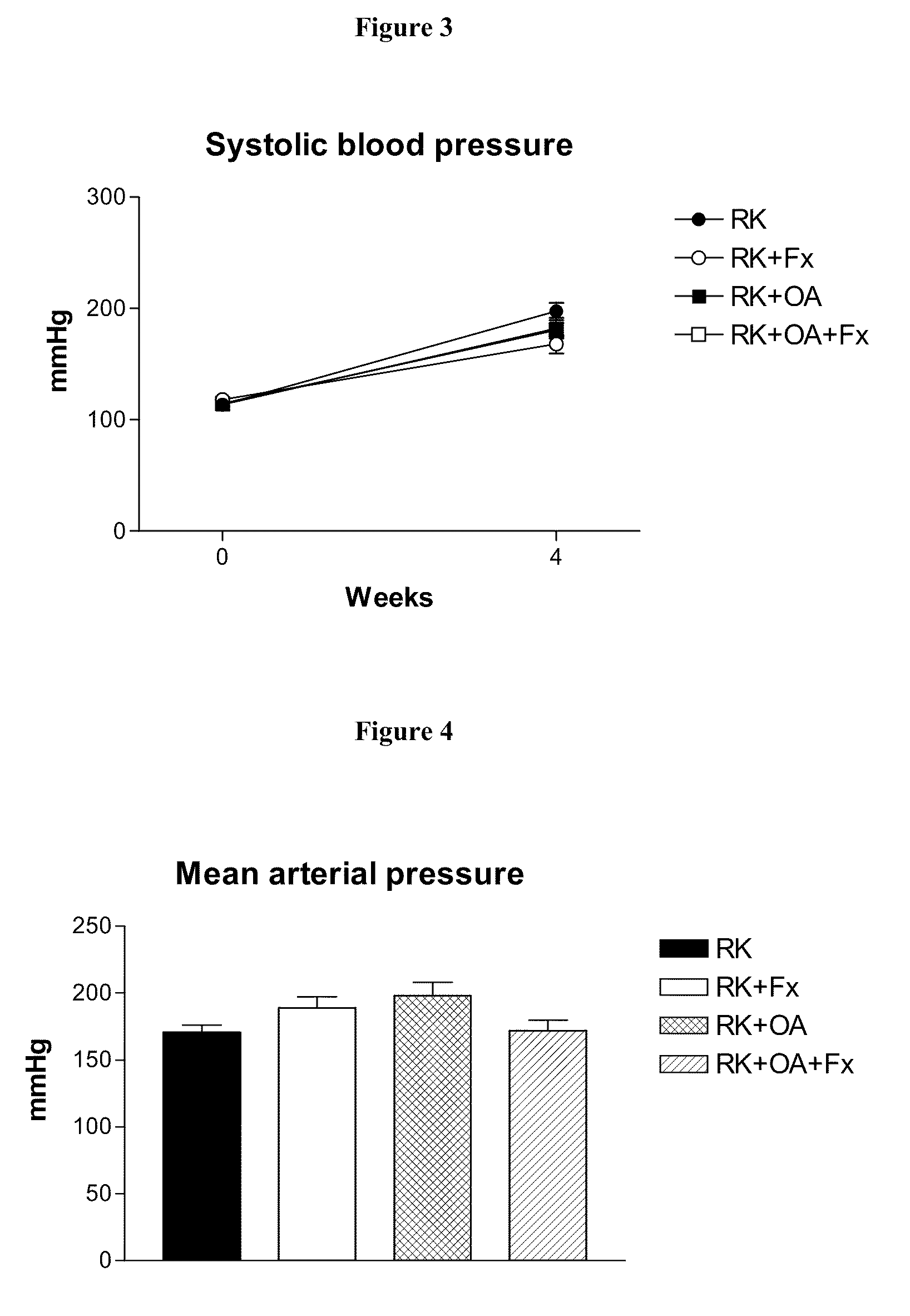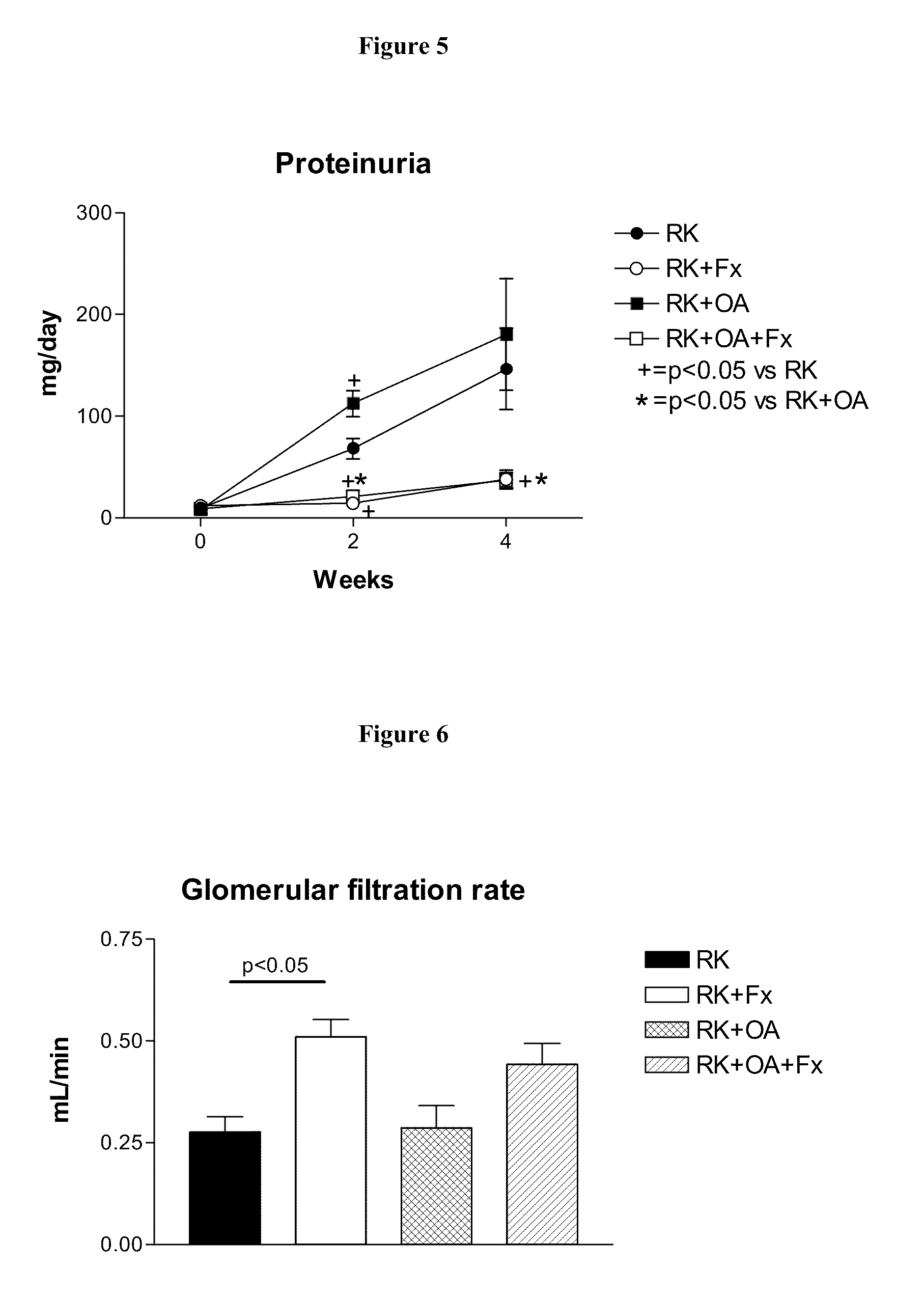Methods for preserving and/or increasing renal function using xanthine oxidoreductase inhibitors
a technology of xanthine oxidoreductase inhibitor and renal function, which is applied in the direction of anti-noxious agents, drug compositions, biocides, etc., can solve the problem that their impact on renal function is not fully understood
- Summary
- Abstract
- Description
- Claims
- Application Information
AI Technical Summary
Benefits of technology
Problems solved by technology
Method used
Image
Examples
example 1
[0194]Information was collected prospectively in a subgroup of 18 human subjects with a history of nephrolithiasis, as reported by the subjects prior to study enrollment. In a 4-week, double-blind, phase 2 study, subjects were randomly assigned to one or four treatment arms: (1) febuxostat 40 mg per day, (2) febuxostat 80 mg per day, (3) febuxostat 120 mg per day, or (4) placebo.
[0195]Subjects completing the double-blind study entered an open-label, long-term study and began treatment with 80 mg febuxostat per day. Febuxostat doses could be titrated over the initial 6 months to 40 mg or 120 mg febuxostat per day based on the subjects' serum urate levels and the occurrence of adverse events.
[0196]In the study subset, a post-hoc analysis of nephrolithiasis outcome in the study subjects (n=13) who had received febuxostat for ≧30 months. In the event of an occurrence of renal calculus formation, all such stones were analyzed for mineral content.
[0197]The following were the criteria for ...
example 2
[0203]Mice of the species / strain B6C3F1 of an initial age of 6 weeks were dosed via oral gavage with febuxostat suspended in 0.5% methyl cellulose. The daily dose administered was either 0 mg (i.e., the control group), 3 mg, 12 mg, 24 mg, or 48 mg. Histopathological examination of the kidney was carried out after 13-weeks of dosing for vacuolar degeneration of renal proximal tubules (a known naturally occurring change in rodents). The results are shown in Table 5.
TABLE 50Daily Dose(Control)3122448No. of animalsMFMFMFMFMFexamined12121212121212121212Vacuolar Degeneration123 7*1 5**1 2**0 1**2of Renal ProximalTubulesM = Male F = Female*p ≦0.05 (Dunnett's non-parametric multiple comparison test)**p ≦0.01 (Dunnett's non-parametric multiple comparison test)
[0204]Example 2 illustrates that administration of febuxostat reduced the amount of vacuolar degeneration of the renal proximal tubules in a statistically significant fashion in the male animals studied.
example 3
[0205]Male Wistar rats (295-340 g) were used to produce rats with remnant kidney (RK) as follows. Under light anesthesia with ether, a 5 / 6 nephrectomy was performed by removal of the right kidney and by selective ligation of 2-3 branches of the left renal artery. Rats were then assigned to one of four treatment groups: Group 1, RK control rats (n=7); Group 2, RK+febuxostat (Fx) rats (n=8); Group 3, RK+oxonic acid (OA) rats (n=6); and Group 4, RK+OA+Fx (n=10). Oxonic acid (OA) (Sigma-Aldrich, St Louis Mo., USA), administered at 750 mg / kg body weight daily by oral gavage, was given starting the day after the 5 / 6 nephrectomy. Beginning immediately following the surgery, febuxostat was administered in drinking water at 30 mg / L (3-4 mg / kg / day), whereas the respective controls received only drinking water (with 3.5 mg / L of NaCl added to keep an equivalent salt concentration to the Fx-containing water).
[0206]All groups were treated for four weeks. Body weight (beginning just before surgery...
PUM
| Property | Measurement | Unit |
|---|---|---|
| frequency | aaaaa | aaaaa |
| body weight | aaaaa | aaaaa |
| systolic blood pressure | aaaaa | aaaaa |
Abstract
Description
Claims
Application Information
 Login to View More
Login to View More - R&D
- Intellectual Property
- Life Sciences
- Materials
- Tech Scout
- Unparalleled Data Quality
- Higher Quality Content
- 60% Fewer Hallucinations
Browse by: Latest US Patents, China's latest patents, Technical Efficacy Thesaurus, Application Domain, Technology Topic, Popular Technical Reports.
© 2025 PatSnap. All rights reserved.Legal|Privacy policy|Modern Slavery Act Transparency Statement|Sitemap|About US| Contact US: help@patsnap.com



